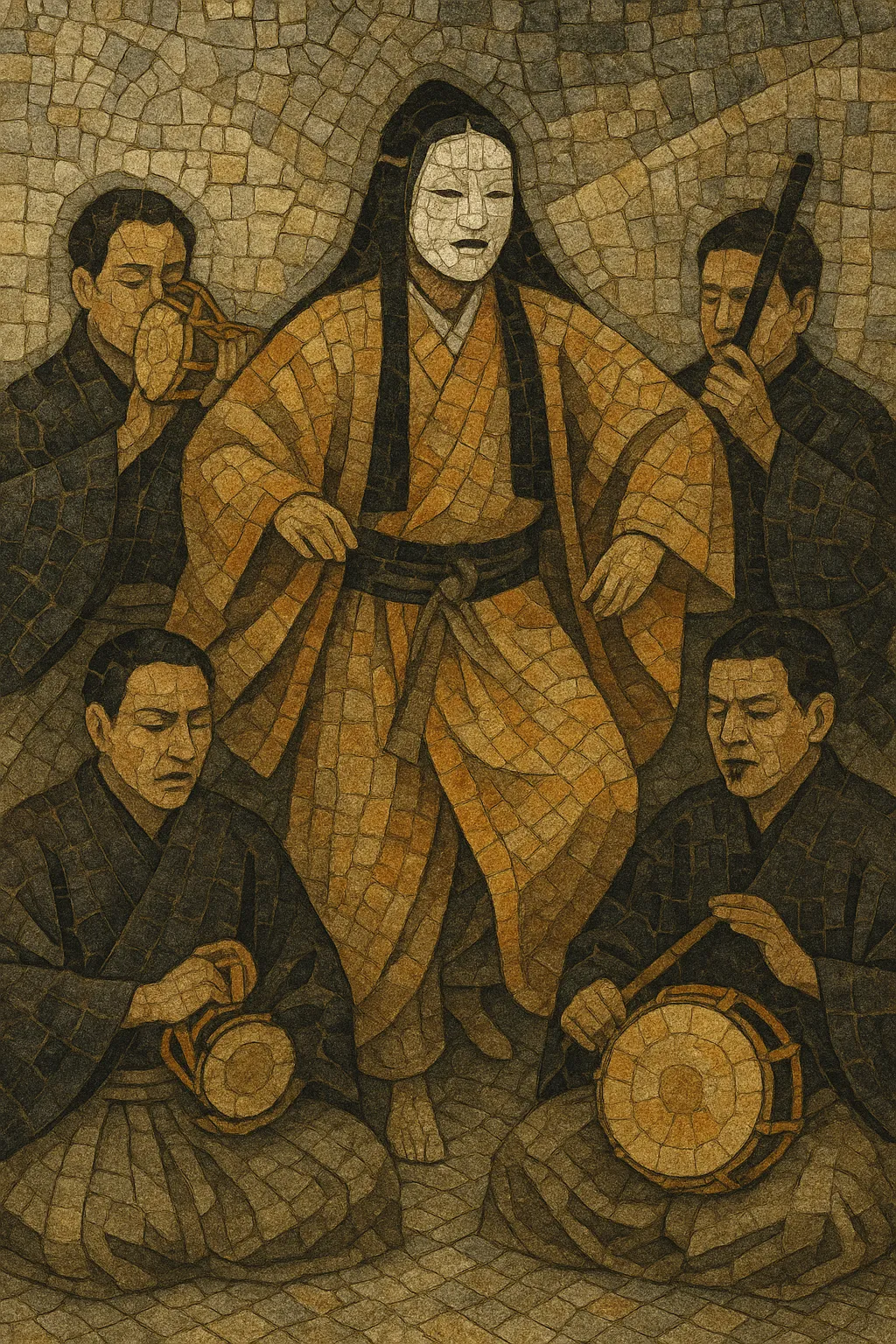Noh (Nō) is a classical Japanese musical drama that fuses stylized dance, poetic chant (utai), and a spare instrumental ensemble (hayashi) into slow-moving, symbol-rich performance. It is defined by the aesthetic of yūgen (mysterious profundity) and by the dramaturgical pacing principle jo–ha–kyū (introduction–development–rapid finale).
Musically, Noh centers on yokyoku (chant) delivered by the principal actor (shite) and an 8-person chorus (jiutai), supported by the nohkan transverse flute and three drums (kotsuzumi shoulder drum, ōtsuzumi hip drum, and ō-daiko stick drum). Rhythmic cycles and shouted drum calls (kakegoe) articulate time, while the nohkan’s penetrating, intentionally “detuned” timbre weaves ornamental lines around the vocal. The result is at once austere and expressive, relying on minimal gesture, codified kata, and masks to evoke gods, warriors, women, madpersons, and demons.
Noh crystallized in the Muromachi period from older temple- and shrine-linked entertainments such as sarugaku and dengaku (now-historic performance practices) alongside courtly gagaku and Buddhist shōmyō chant. Under the actor–playwright Kan’ami and his son Zeami Motokiyo, Noh adopted refined poetics, codified movement, and the jo–ha–kyū pacing concept. Patronage from shogun Ashikaga Yoshimitsu enabled the art to mature and spread.
Zeami authored treatises that defined aesthetics (yūgen, hana) and shaped the repertory and role system (shite, waki, chorus, hayashi). Successors such as Konparu Zenchiku and Komparu Zenpō expanded the corpus. By the early Edo period, five shite schools (Kanze, Hōshō, Komparu, Kongō, Kita) were established, each maintaining transmission lineages (iemoto). Kyōgen comedic interludes developed alongside Noh on the same stage.
With Tokugawa support, Noh became an elite ceremonial art, performed at court and samurai households. After the Meiji Restoration’s social upheavals, leading families (e.g., Umewaka Minoru I) spearheaded revival efforts, positioning Noh as a national classical heritage.
Noh artists navigated wartime and postwar eras through preservation and selective innovation. The form was designated an Important Intangible Cultural Property in Japan and later recognized by UNESCO. Today, Noh remains living tradition: faithful to its medieval repertoire yet open to new plays, collaborations, and international touring, while continuing rigorous lineage-based training.
-
•
Choose a play type (god, warrior, woman, madperson, demon) and outline scenes via jo–ha–kyū.
•Draft text in short strophes mapped to shōdan; interleave chorus and solo chant.
•Assign drum patterns and cue shouts to pivotal motions; sketch nohkan entrances for color and emphasis.
•Workshop with actors to align breath, chant, and kata; refine tempo elasticity and transitions.
•Finalize with chorus harmonization (in unison timbre) and precise entrances/exits across the bridgeway.


